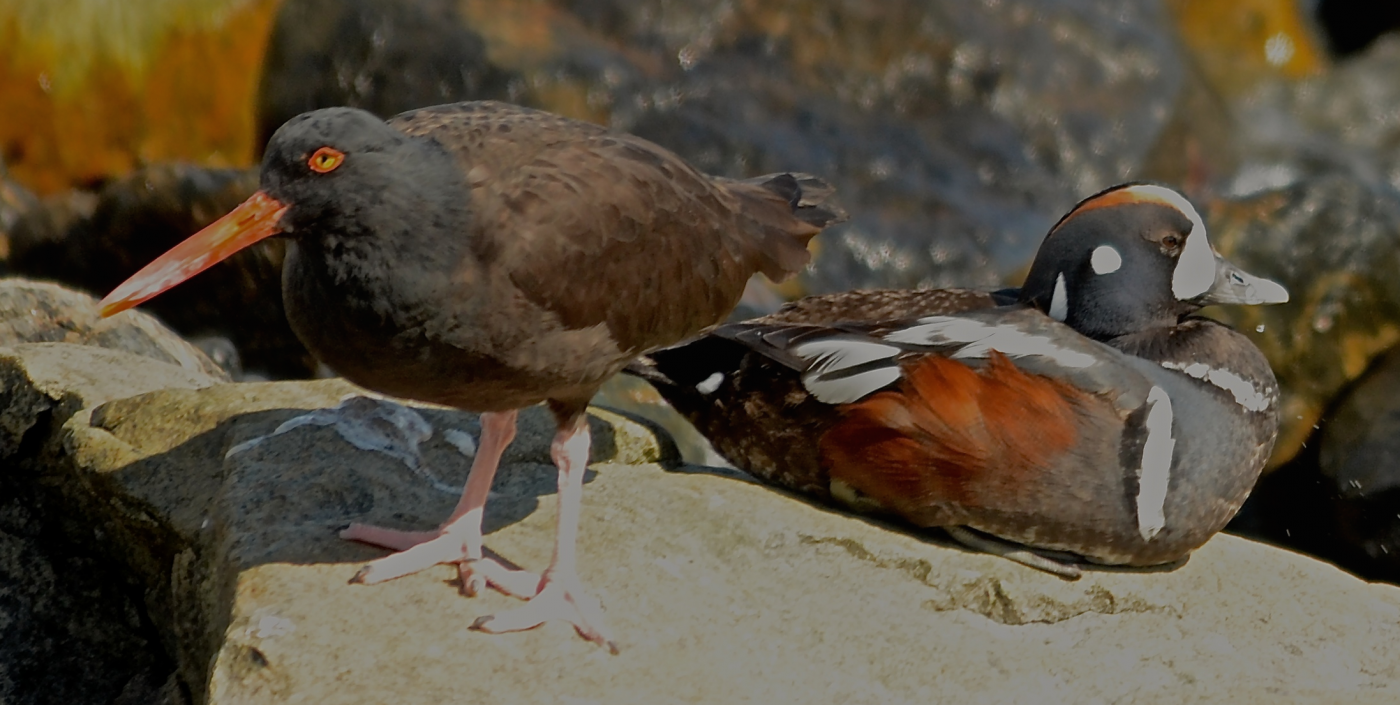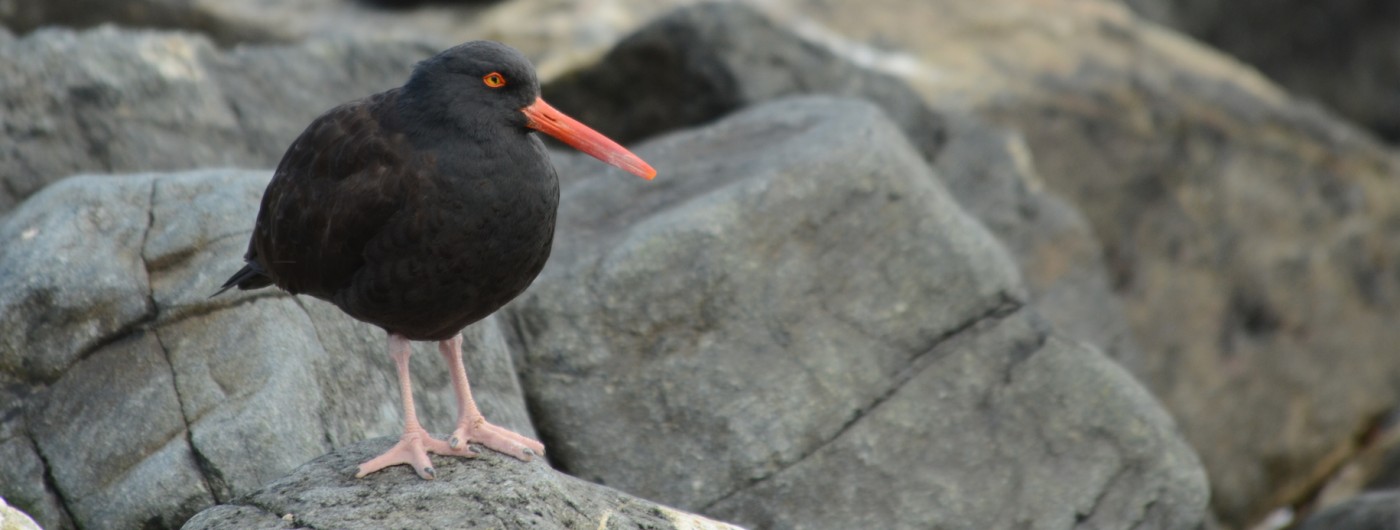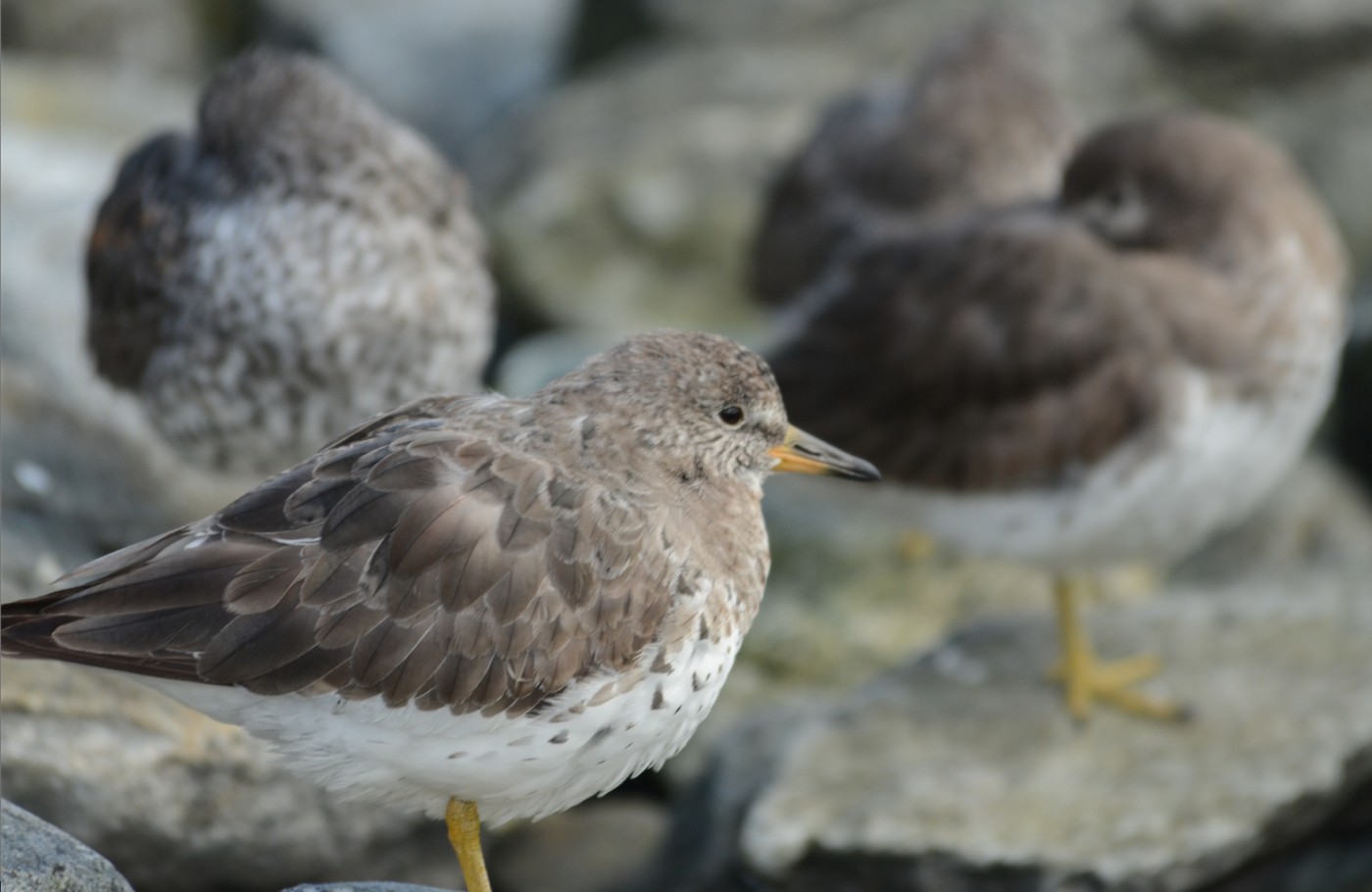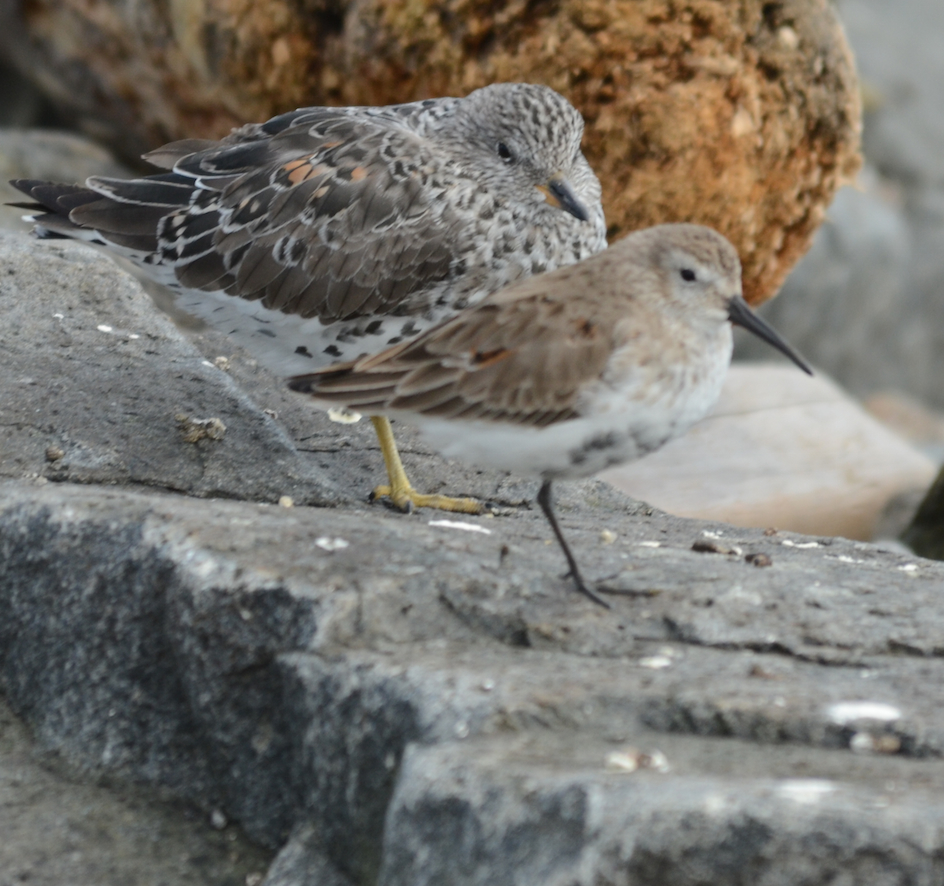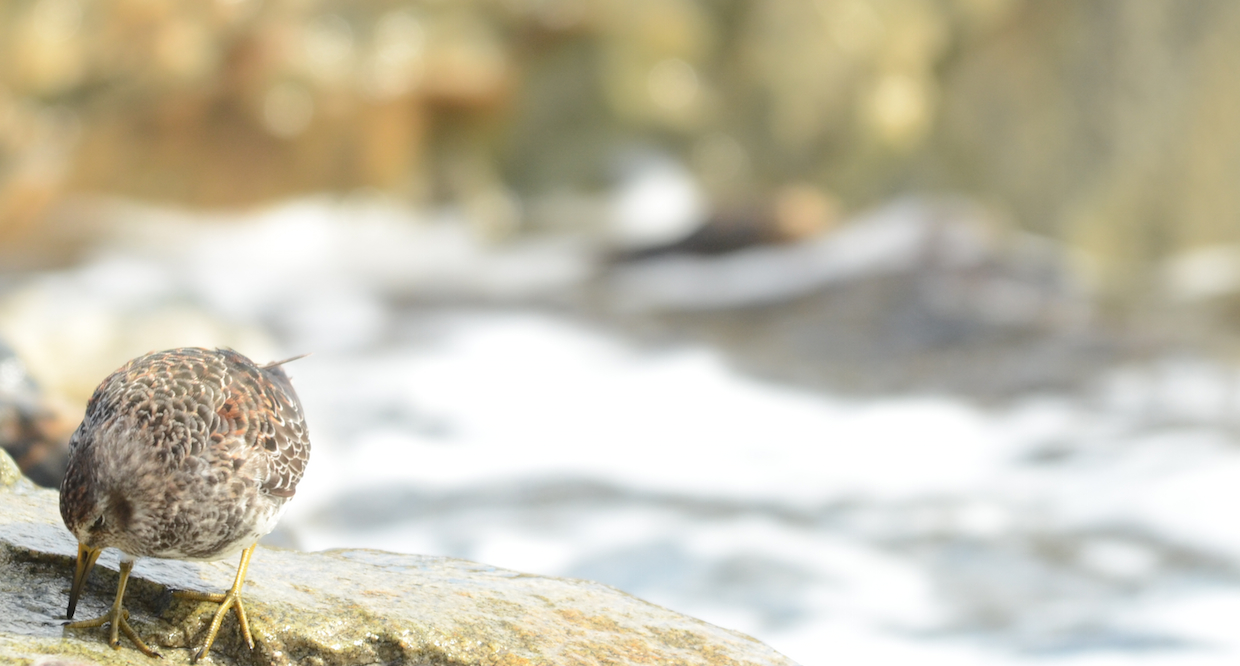When you live on a small coastal islet, mysterious things happen with Internet and phone connections from time to time. Both crashed here last night so this blog is a combination of the two days. The weather has been typical of early spring weather in coastal British Columbia. Winds have generally been about 10 to 20 knots, swinging around from west to northwest and back again. Spectacular stacks of clouds keep rolling down the Strait from open ocean and the heavy showers visible in the surrounding hills would inspire any watercolour painter. Race Rocks itself seems to be in a drier micro-climate most of the time with showers all around – the centre of the donut. Dramatic skies continued right into sunset tonight with beautiful pinks and oranges framed by sweeping, purple and gray-blue clouds. The forecast for tomorrow looks even brighter.
South across the Strait, there was fresh snow, low in the Elwha Valley this morning and you could feel that cold nip in the air: perfect weather for sea going salmon smolts and just what the herring often spawn in. Speaking of weather, the weather station appears to have crashed so I will trouble-shoot that in the morning.
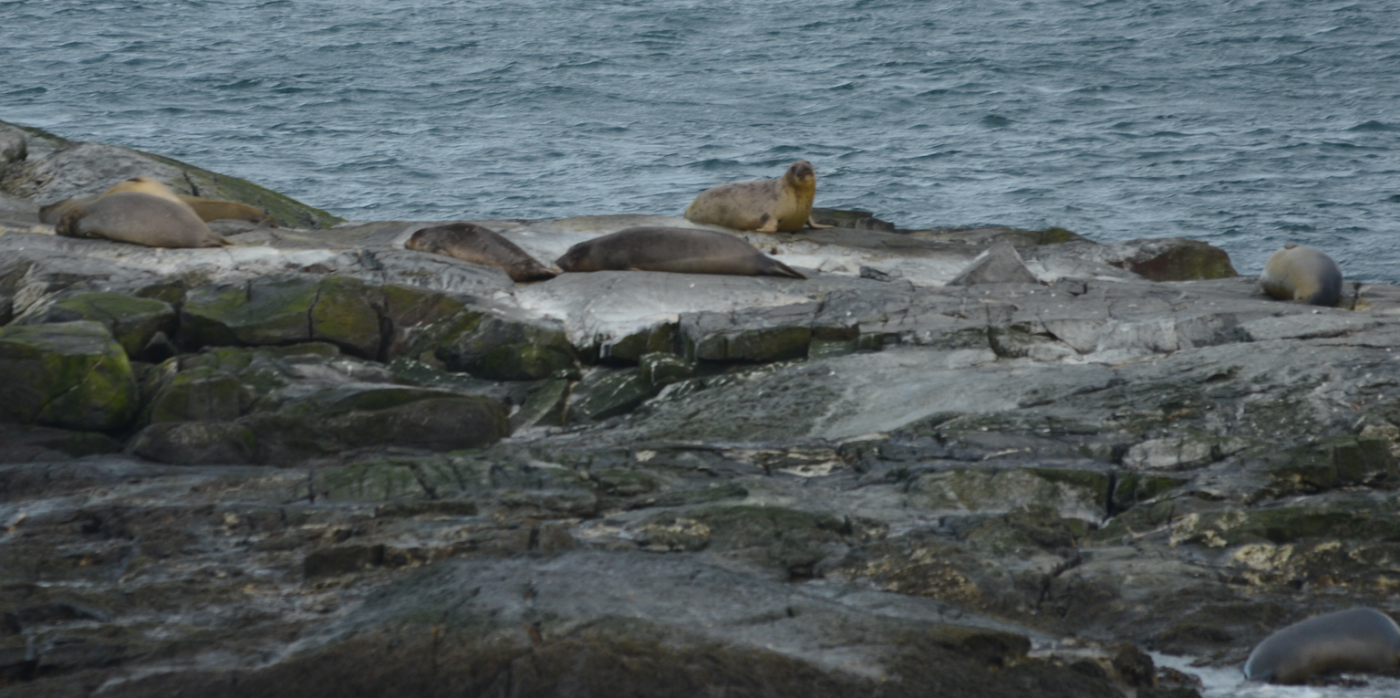
Eleven Northern Elephant Seals were hauled out on Middle Rock yesterday and one checked out the jetty ramp this morning.
In spite of the blustery conditions, there were three whale watching boats in the Ecological Reserve today and lots to see in terms of smaller wildlife which are often over-looked and are really stunning in their own right.
This Oystercatcher likes to stand with his/her toes crossed. Does it make for more stability in the wind?
Here is a challenge for you, inspired by the ‘Marine Detective’ who does a similar thing with underwater photos of cryptic fish. How many species and how many birds can you spot in the photo below?
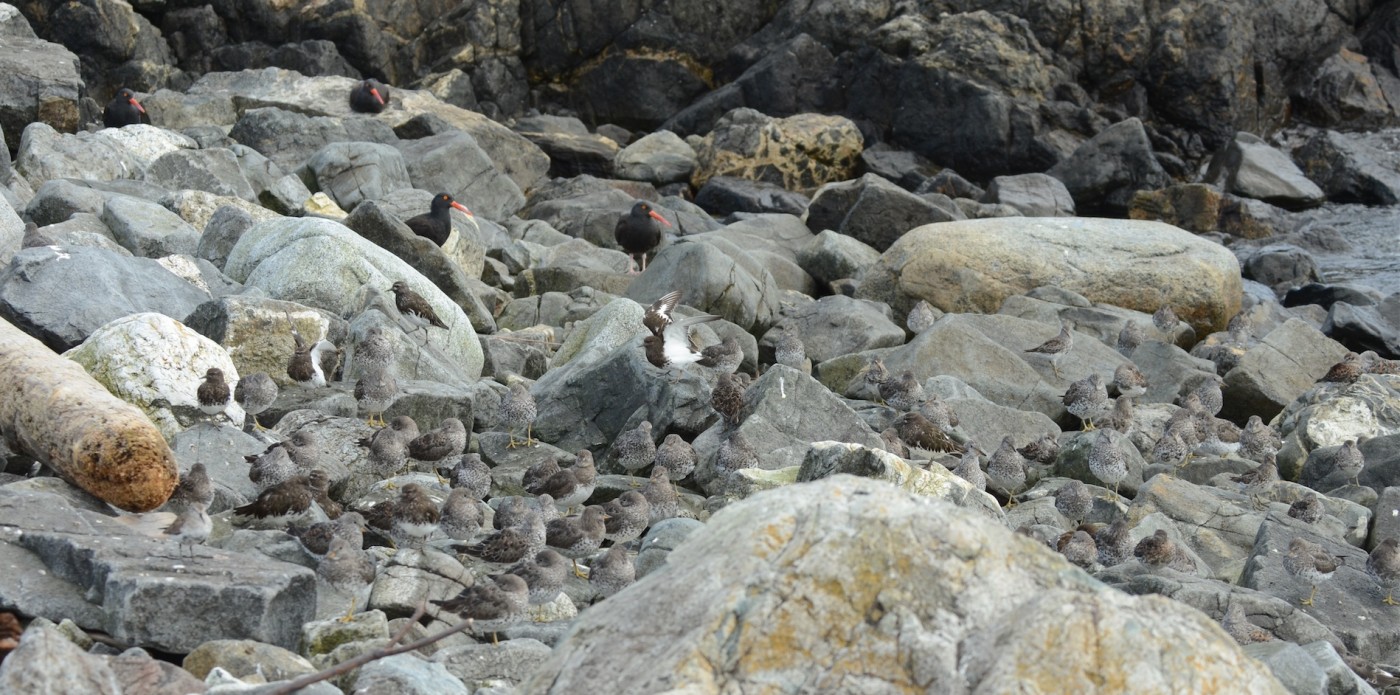
A mixed species flock of shorebirds rests on Race Rocks in the lee of the Light Tower and main house. How many species and how many birds? More hints (photos) to follow on the different species.
All of these species nest on the ground so being hard to see is a good thing. So does the stay-at-home Black Oystercatcher which is hard to ignore and nests along the BC coast, close to its’ natal shore.
Many of the shorebirds resting here on Race Rocks, fly all the way up to the arctic to breed. Surfbirds nest on mountain ridges in the Yukon and Alaska while Dunlin prefer wet coastal tundra. Rock Sandpipers make their nests on the tundra in northwestern Alaska near the Bering Sea. Black Turnstones also nest along the Bering Sea, near coastal meadows in western Alaska.
Although I wouldn’t call it a migration, I did a few kilometers today, wheel barrowing around firewood wood and wood chips, tending the desalinator and energy building, and getting distracted from my labours by photographing birds. I was really pleased that the sunshine allowed for water making with the desalinator without the using the generator. The genny only required an hour run time, to top up the batteries thanks to the solar panels.
